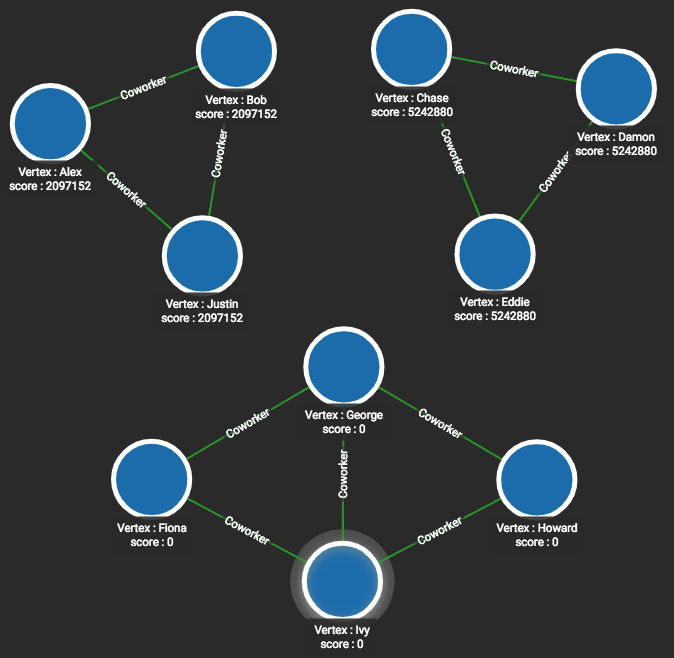Weakly Connected Components
A component is the maximal set of vertices, plus their connecting edges, which are interconnected. That is, you can reach each vertex from each other vertex. In the example figure below, there are three components.
This particular algorithm deals with undirected edges. If the same definition (each vertex can reach each other vertex) is applied to directed edges, then the components are called Strongly Connected Components. If you have directed edges but ignore the direction (permitting traversal in either direction), then the algorithm finds Weakly Connected Components.
Specifications
tg_conn_comp (SET<STRING> v_type, SET<STRING> e_type, INT output_limit = 100,
BOOL print_accum = TRUE, STRING result_attr = "", STRING file_path = "")| Characteristic | Value |
|---|---|
Result |
Assigns a component id (INT) to each vertex, such that members of the same component have the same id value. |
Input Parameters |
|
Result Size |
V = number of vertices |
Time Complexity |
O(E*d), E = number of edges, d = max(diameter of components) |
Graph Types |
Undirected edges |
Example
It is easy to see in this small graph that the algorithm correctly groups the vertices:
-
Alex, Bob, and Justin all have Community ID = 2097152
-
Chase, Damon, and Eddie all have Community ID = 5242880
-
Fiona, George, Howard, and Ivy all have Community ID = 0
Our algorithm uses the TigerGraph engine’s internal vertex ID numbers; they cannot be predicted.
RUN QUERY tg_conn_comp(["Person"], ["Coworker"], _, _, _, _)